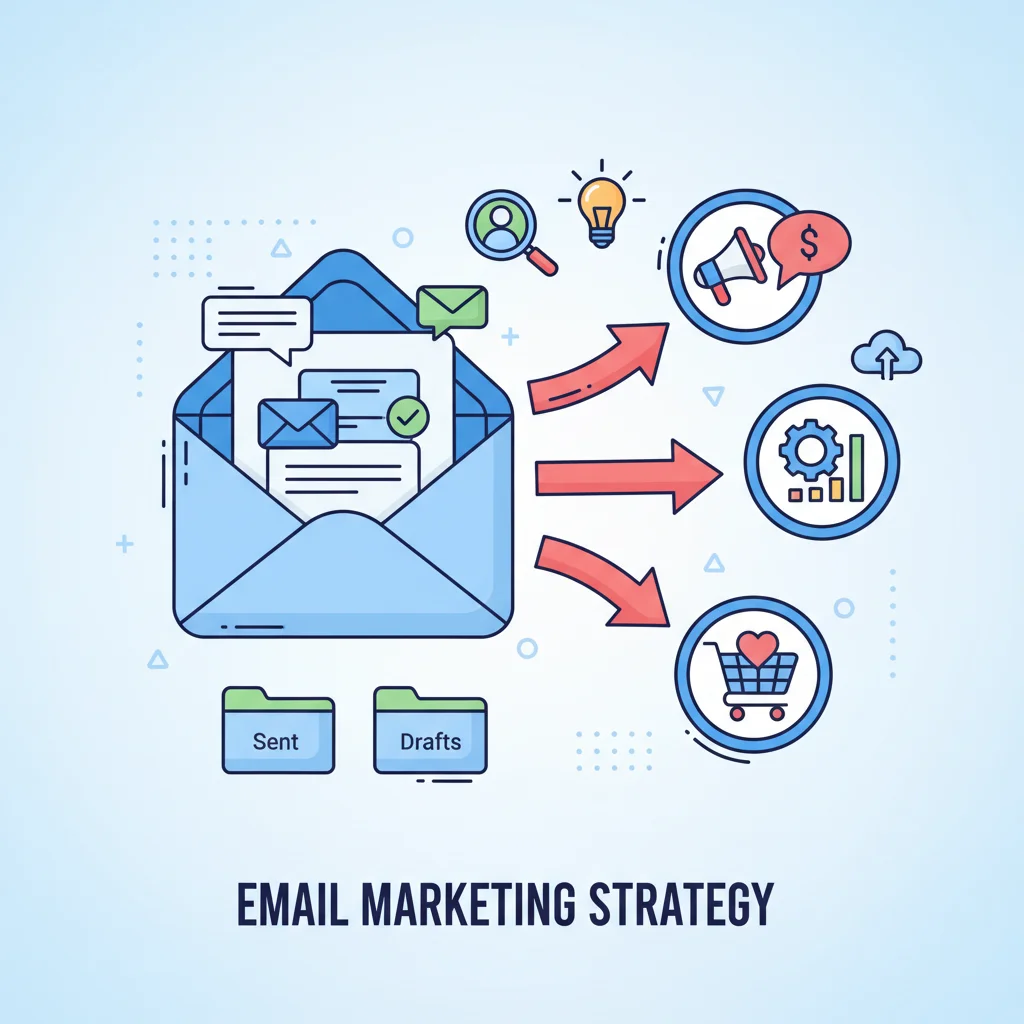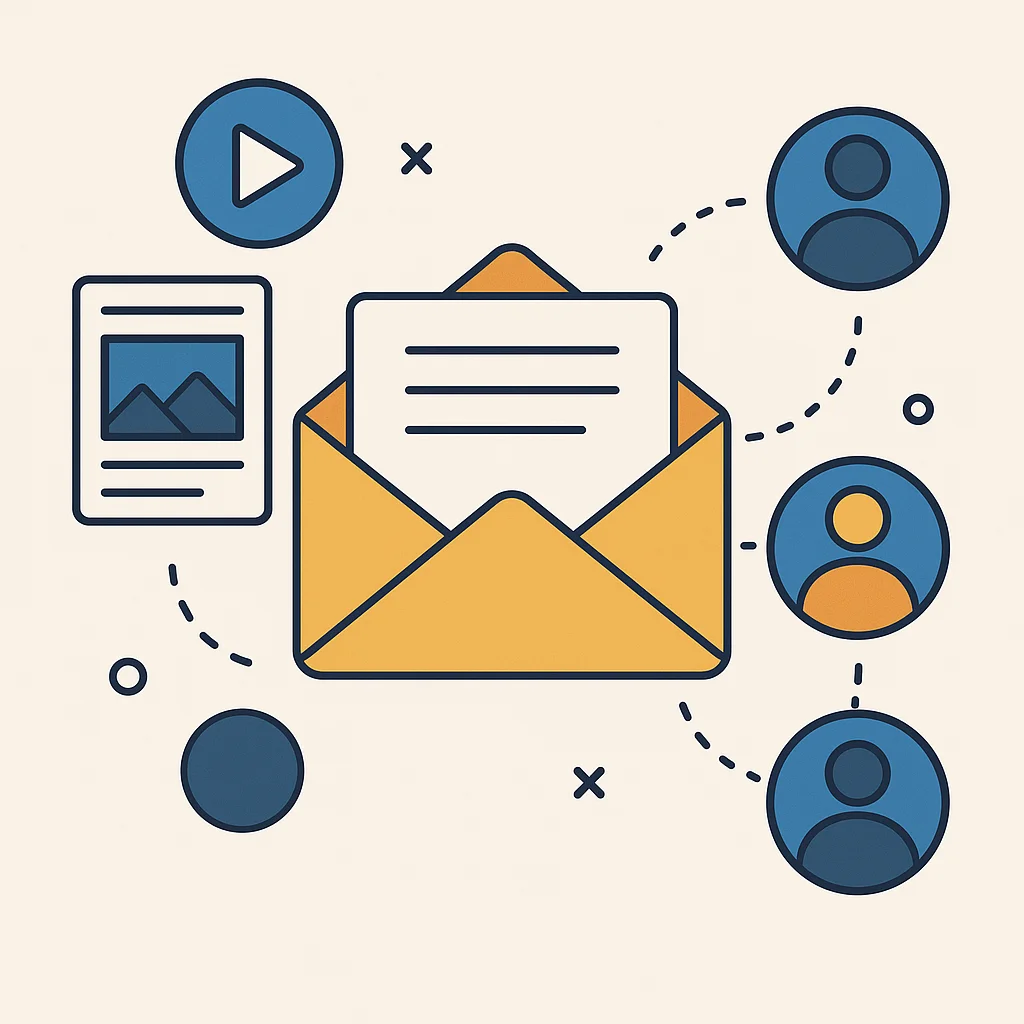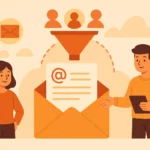Now Reading: Effective Financial Services Email Campaign Guide for Success
-
01
Effective Financial Services Email Campaign Guide for Success
Effective Financial Services Email Campaign Guide for Success

Your inbox is probably flooded with financial emails that feel like they were written by robots, right? Generic messages about “exciting investment opportunities” that make you want to hit delete faster than you can say “unsubscribe.” Here’s the thing – most financial companies are doing email marketing completely wrong, and it’s costing them millions in lost revenue. But what if I told you that creating an effective financial services email campaign doesn’t have to be rocket science? You just need the right approach.
Key Takeaways
Creating an effective email marketing campaign for financial services requires a strategic approach that balances trust-building, compliance, and genuine value delivery. Here’s what you need to know:
- Segment your audience based on financial goals, demographics, and investment preferences to deliver personalized content
- Focus on education over promotion by providing market insights, financial tips, and actionable advice that helps clients make informed decisions
- Maintain strict compliance with regulations like GDPR, CAN-SPAM, and industry-specific requirements while building trust through transparency
- Use professional yet approachable tone that reflects expertise without sounding robotic or overly corporate
- Implement automated sequences for onboarding, lifecycle events, and nurturing leads through the complex financial decision-making process
- Craft compelling subject lines that create urgency and curiosity while remaining trustworthy and relevant to financial concerns
- Include clear calls-to-action that guide recipients toward specific next steps like scheduling consultations or downloading resources
- Provide consistent value through market updates, educational content, and personalized financial insights that position you as a trusted advisor
Building Trust Through Strategic Email Segmentation
The foundation of any effective financial services email campaign starts with understanding that not all clients are created equal. You wouldn’t give the same investment advice to a 25-year-old just starting their career and a 55-year-old planning for retirement, so why would you send them the same emails?
Smart segmentation goes beyond basic demographics. I’ve found that the most successful financial email campaigns segment audiences based on:
- Financial goals (retirement planning, debt management, wealth building)
- Life stages (recent graduates, new parents, pre-retirees)
- Investment experience (beginners, intermediate, advanced)
- Account value (different service levels for different portfolio sizes)
- Engagement level (highly engaged vs. dormant clients)
Personalization That Actually Works
Here’s where most financial companies mess up – they think personalization means just adding someone’s first name to the subject line. Real personalization in financial services means addressing specific pain points and goals.
For example, instead of sending a generic “Market Update” email, segment your list and send:
- “How Market Volatility Affects Your Retirement Timeline” (to pre-retirees)
- “3 Investment Opportunities for Young Professionals” (to millennials)
- “Protecting Your Portfolio During Uncertain Times” (to conservative investors)
This approach makes your effective financial services email campaign feel like a personal consultation rather than mass marketing.
Content Strategies That Build Authority
Financial services live and die by trust, and your email content is often the first impression potential clients get of your expertise. The most successful campaigns I’ve analyzed focus heavily on education over promotion.
Educational Content That Converts
Your audience is hungry for financial knowledge, but they’re drowning in complex jargon and conflicting advice. Position yourself as the trusted guide who can cut through the noise.
Winning content types include:
- Market analysis with plain-English explanations
- Step-by-step guides for financial planning milestones
- Case studies (anonymized) showing real client success stories
- Timely advice around tax deadlines, market events, or life changes
- Tool recommendations like budgeting apps or investment calculators
The 80/20 Rule for Financial Email Content
Here’s a game-changer: follow the 80/20 rule. Spend 80% of your email providing genuine value, and only 20% promoting your services. This builds trust and positions you as an advisor, not a salesperson.
Sample email structure:
Subject: Your 401(k) might be costing you $50,000
Hi [Name],
I just ran the numbers on something that shocked me.
The average person loses $50,000 in retirement savings due to high 401(k) fees. Most people have no idea this is happening.
Here's how to check if you're affected:
1. Log into your 401(k) account
2. Look for "expense ratio" on your fund details
3. If it's above 0.75%, you're paying too much
[Educational content continues...]
Want me to review your 401(k) for hidden fees? Just reply to this email and I'll take a look.
Best,
[Your name]Useful Articles:
Email Templates That Drive Results
Let me share some proven templates that consistently perform well in financial services. These aren’t just pretty designs – they’re conversion machines based on real data.
Welcome Series Template
Email 1: Immediate Value Delivery
Subject: Your financial roadmap is ready
Hi [Name],
Thanks for joining our community of smart investors!
As promised, here's your personalized financial roadmap: [link to download]
This 15-page guide covers:
- Your current financial snapshot
- Three immediate action steps
- Resources to accelerate your progress
I'll be sending you weekly insights to help you build wealth systematically. No fluff, just actionable advice.
Tomorrow, I'll share the #1 mistake I see new investors make (and how to avoid it).
Talk soon,
[Your name]
P.S. Hit reply and let me know your biggest financial question. I read every email.Email 2: Problem Identification
Subject: The $100,000 mistake (avoid this)
Hi [Name],
Yesterday I met with a new client who made a costly mistake.
She had $100,000 sitting in a savings account earning 0.01% interest for three years.
If she'd invested that money in a simple index fund averaging 7% returns, she'd have $121,000 today instead of $100,003.
That's a $21,000 opportunity cost.
Here's the thing - she's not alone. Most people keep too much money in low-yield accounts because they don't know their options.
[Educational content about investment alternatives...]
Want to make sure you're not making similar mistakes? Book a free 15-minute portfolio review: [calendar link]
Best,
[Your name]Market Update Template
Subject: What today's market drop means for you
Hi [Name],
The market dropped 2.3% today, and my phone's been ringing non-stop.
Here's what you need to know:
✓ This is normal market behavior (we see 10+ corrections per year)
✓ Your long-term strategy hasn't changed
✓ This might actually be a buying opportunity
If you're feeling nervous, that's completely normal. But don't let emotions drive financial decisions.
[Specific analysis relevant to current events...]
Questions about your portfolio? Just reply to this email.
Stay calm and carry on,
[Your name]Compliance Without Killing Creativity
Financial services email marketing comes with more rules than a tax code, but compliance doesn’t have to make your emails boring. You can stay compliant while still creating engaging content.
Essential Compliance Elements
Every financial services email needs:
- Clear unsubscribe option (make it easy to find)
- Physical business address in the footer
- Proper disclaimers for investment advice
- Risk disclosures where appropriate
- Data protection compliance (GDPR, CCPA)
Making Disclaimers Less Painful
Instead of cramming legal text into your email body, create a clean footer with links to your full disclosures. This keeps your main content readable while meeting compliance requirements.
Sample compliant footer:
This email contains general information only. For personalized advice, please consult with a qualified financial advisor.
Investment products are not FDIC insured and may lose value.
[Company Name] | [Address] | [Unsubscribe] | [Privacy Policy] | [Disclosures]Automation Sequences That Nurture Relationships
The beauty of email automation in financial services is that it lets you provide consistent value without constant manual work. But automation doesn’t mean impersonal – it means strategic.
Lifecycle-Based Automation
New Client Onboarding Sequence:
- Day 1: Welcome and immediate value
- Day 3: How to get the most from your partnership
- Day 7: Common questions answered
- Day 14: Your first month action plan
- Day 30: Portfolio review and next steps
Dormant Client Re-engagement:
- Week 1: “We miss you” with valuable market insight
- Week 2: Exclusive resource or tool
- Week 3: Personal note from advisor
- Week 4: Final attempt with special offer
Event-Triggered Emails
Set up automated emails for:
- Market volatility (reassurance and guidance)
- Life events (marriage, job change, inheritance)
- Account milestones (reaching savings goals)
- Seasonal events (tax season, year-end planning)
Useful Articles:
Subject Lines That Get Opened
Your subject line is the gatekeeper to your entire effective financial services email campaign. In financial services, you’re competing with urgent work emails and family messages, so your subject line needs to earn its place.
High-Performing Subject Line Formulas
Curiosity + Benefit:
- “The retirement mistake costing you $50,000”
- “Why your 401(k) might be failing you”
- “The investment secret wealthy people use”
Urgency + Relevance:
- “Tax deadline approaching – action required”
- “Market update: what you need to know today”
- “Rate change affects your mortgage options”
Personal + Specific:
- “Sarah, your portfolio review is ready”
- “3 moves for your retirement account this month”
- “Your investment question answered”
What NOT to Do
Avoid these subject line killers:
- ALL CAPS (screams spam)
- Too many exclamation points!!!
- Overly salesy language (“AMAZING OPPORTUNITY!”)
- Vague promises (“Make money fast”)
- Generic greetings (“Newsletter #47”)
Advanced Segmentation Strategies
Basic segmentation is just the starting point. Advanced segmentation turns your effective financial services email campaign into a precision instrument that delivers exactly the right message to the right person at the right time.
Behavioral Segmentation
Track how subscribers interact with your emails and website:
- Email engagement (opens, clicks, time spent reading)
- Website behavior (pages visited, resources downloaded)
- Service usage (which tools they use, how often)
- Response patterns (do they reply to emails, attend webinars?)
Dynamic Content Based on Segments
Use your email platform’s dynamic content features to show different content blocks to different segments within the same email.
Example: Market update email with dynamic content
- Conservative investors see: stability-focused analysis
- Aggressive investors see: growth opportunity highlights
- New investors see: educational context and definitions
Mobile Optimization for Financial Emails
Over 60% of financial services emails are opened on mobile devices, but most financial emails are still designed for desktop. This is a huge missed opportunity.
Mobile-First Design Principles
- Single column layout (easier to read on small screens)
- Large, tappable buttons (minimum 44px height)
- Concise subject lines (under 30 characters for mobile)
- Scannable content (short paragraphs, bullet points)
- Fast-loading images (optimize file sizes)
Testing Your Mobile Experience
Before sending any email, test it on:
- iPhone (various sizes)
- Android devices
- Different email clients (Gmail, Apple Mail, Outlook)
- Both portrait and landscape orientations
Useful Articles:
Timing and Frequency Optimization
Financial services emails have unique timing considerations. Your audience isn’t browsing for entertainment – they’re looking for actionable information when they need it.
Best Send Times for Financial Services
Data shows these times typically perform best:
- Tuesday-Thursday, 10 AM – 2 PM (business hours, when people think about finances)
- Sunday evenings (planning for the week ahead)
- Month-end (when people review their finances)
Frequency Guidelines
Educational content: Weekly is usually optimal
Market updates: As needed (don’t spam during volatile periods)
Promotional emails: Monthly maximum
Transactional emails: Immediate (account updates, confirmations)
Content Calendar for Financial Services
Planning your effective financial services email campaign content in advance ensures you’re always providing timely, relevant value. Here’s how to structure your content calendar:
Monthly Themes
- January: New year financial planning
- February: Tax preparation
- March: Spring financial cleaning
- April: Tax deadline support
- May: Summer planning and goals
- June: Mid-year portfolio review
- July: Vacation and spending planning
- August: Back-to-school financial prep
- September: Fall financial planning
- October: Year-end tax strategies
- November: Holiday budgeting
- December: Year-end review and next year planning
Weekly Content Mix
Monday: Market analysis or economic outlook
Wednesday: Educational content or how-to guides
Friday: Personal finance tips or client spotlights
Personalization Beyond First Names
True personalization in financial services goes way deeper than “Hi [First Name].” It’s about understanding where each person is in their financial journey and meeting them there.
Data-Driven Personalization
Use the data you have to customize:
- Investment recommendations based on risk tolerance
- Content complexity based on financial knowledge level
- Product suggestions based on life stage and goals
- Communication frequency based on engagement preferences
Dynamic Email Content Examples
For a 30-year-old with aggressive risk tolerance:
“Market volatility creates opportunities for long-term investors like you. Here are three growth stocks to consider…”
For a 55-year-old with conservative preferences:
“Market volatility can be concerning as you approach retirement. Here’s how to protect your portfolio while maintaining growth…”
Same market event, completely different messaging based on recipient data.
Building Your Email List Ethically
Growing your email list in financial services requires a delicate balance between aggressive marketing and compliance requirements. You can’t just buy lists or use sketchy tactics – trust is everything.
Lead Magnets That Work
Financial calculators (retirement, mortgage, investment)
Educational guides (“The Complete Guide to 401(k) Optimization”)
Market reports (weekly or monthly analysis)
Webinar recordings (evergreen educational content)
Checklists (“10-Point Financial Health Checkup”)
Opt-in Best Practices
- Double opt-in for compliance and list quality
- Clear value proposition (what will they get?)
- Frequency expectations (how often will you email?)
- Easy unsubscribe (builds trust, reduces spam complaints)
Creating an effective financial services email campaign isn’t about tricks or hacks – it’s about building genuine relationships through consistent value delivery. Focus on helping your audience achieve their financial goals, stay compliant with regulations, and always prioritize trust over quick wins. When you get the fundamentals right, the results will follow naturally.





















